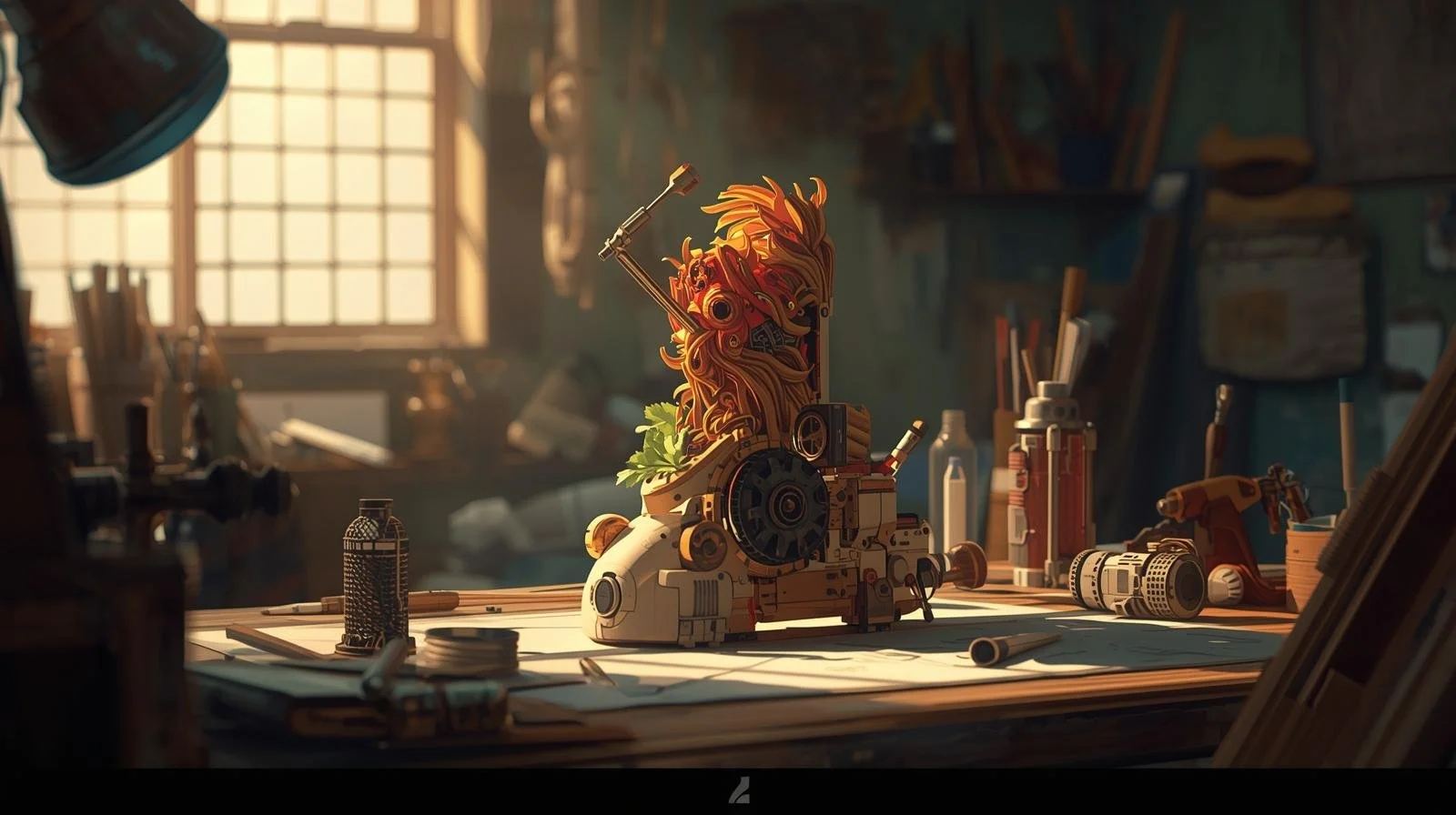The Beauty of Imperfect Progress
What Wabi-Sabi Can Teach Leaders About Innovation
For years, I thought innovation meant getting everything right before sharing it.
The perfect concept. The flawless slide deck. The finished product.
Over the last couple of years, while building digital manufacturing solutions, I’ve learned that progress doesn’t start with perfection. It starts the moment we make our work visible, when we allow others to see the rough edges, the early iterations, and the questions we’re still trying to answer.
This realisation came not from a business book about innovation, but from an idea rooted in Japanese aesthetics: wabi-sabi - the beauty of imperfection, impermanence, and incompleteness.
The Perfection Trap in Digital Transformation
In manufacturing, perfectionism hides behind strategy.
Executives often postpone digital initiatives until every condition is ideal:
The business case is proven,
The data model is complete,
The ROI is guaranteed.
But waiting for “perfect readiness” can delay transformation, especially the digital one, for years. I’ve seen factories with great people and advanced machines remain stuck, simply because leaders were not ready to start up with less than 100% solution.
In practice, this fear of imperfection suffocates innovation. Projects are over-engineered before they ever reach the shop floor. And the invisible progress - those small steps, insights, and learnings - gets lost along the way.
Finding Beauty in the Incomplete
In Japan, pottery masters often leave visible fingerprints in the clay. These are not mistakes; they’re signatures of the human hand, proof that a person, not a machine, shaped the work.
The same thinking applies to leadership and transformation. The fingerprints of progress: experiments, prototypes, early mistakes, they shouldn’t be hidden. They show that learning and progress are happening.
When you share unfinished work, you invite collaboration. You give others permission to contribute and improve what’s already in motion. In the long run, this transparency builds far more trust than a perfectly polished keynote.
The Science of Small Wins
During years of working on digital solutions, as a side development project, I found that the strongest impulses for motivation and creativity aren’t recognition or big achievements, it’s making visible progress on meaningful work.
After hundreds of daily working hours with professional computer scientists and industry experts, I noticed that when people could point to clear progress, even a small one, their mood, creativity, and problem-solving ability improved. Conversely, when learning or effort wasn’t recognised, invisible progress without clear results drained motivation.
Transformative teams don’t need to wait until the final rollout to celebrate success. They need to see progress every week, a working feature, a test model, a pilot that captures real data. Each visible improvement strengthens belief in the ultimate vision.
Leadership: From Control to Curiosity
Perfectionism is a form of control. It’s the attempt to eliminate uncertainty by polishing everything until risk disappears. But transformation is never risk-free - it’s an unfolding process.
A wabi-sabi mindset shifts leadership from control to curiosity.
It asks:
What can we learn from what’s already working?
What can we improve without waiting for perfect data?
How can we make our progress visible, so others see the direction we’re heading?
This is especially powerful in AI and digital manufacturing, where uncertainty is part of the terrain. Leaders who share prototypes and early results build trust across their teams because they normalise iteration. They show that progress is not a straight line but a living process.
A Lesson from the Shop Floor
Lately, we have launched a completely new feature for shop floor teams to adopt a new data monitoring system. I wanted the interface design to be perfect and aligned with the rest of the stack. In the past, we had a similar approach, but this time, we decided instead to release a simple version with essential key features, iterrated weekly, together with the customer.
What happened next surprised everyone in the team.
Operators began using the application because it turned out that what seemed an imperfect design actually did the job and sparked conversation, ownership, and improvement. Within weeks, the tool evolved into something far more valuable than the “perfect” version we had originally planned.
Visible progress ignited engagement.
The act of showing work-in-progress created momentum that no strategy paper could.
Embracing the Unfinished
In Japanese art, there is a long tradition of repairing broken pottery with gold lacquer, turning cracks into highlights. The repair doesn’t hide the flaw - it celebrates it as part of the object’s history.
Manufacturing transformation is similar. The cracks - failed pilots, system errors, project delays - aren’t proof of weakness. They’re gold-filled reminders of learning and resilience. Each one marks a point where the organisation decided to continue, not quit.
Transformation, like pottery, is never finished. It evolves, accumulates character, and tells a richer story with every iteration.
Closing Thought
Wabi-sabi teaches us that imperfection isn’t the opposite of progress - it is progress.
So next time your team hesitates to share a prototype or publish early results, ask yourself:
Are we hiding our fingerprints, or are we showing the world that we’re learning?
Because innovation doesn’t come from hiding the rough edges.
It comes from celebrating the beauty of what’s still in progress.
That is also why I decided to publish this space - Visionary Engine. It's not 100% ready, it's far from perfect, but it's here. I hope you will enjoy observing my journey of building it, and in the meantime, finding content which you might find interesting.
What’s one unfinished project you could share with your team this week?
Not to prove it’s done but to show it’s becoming.

